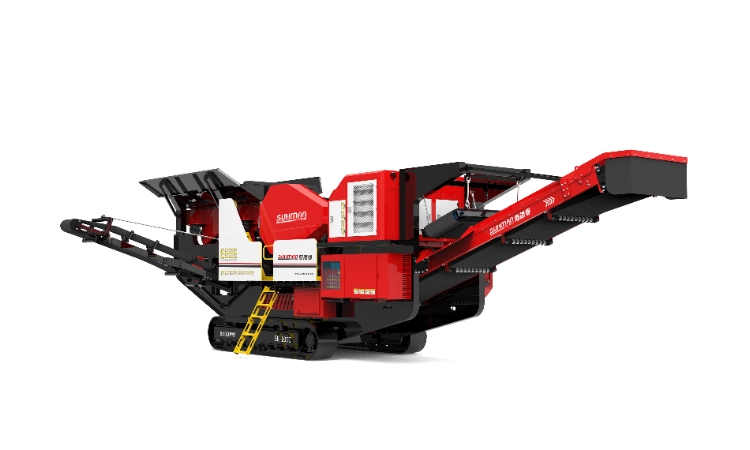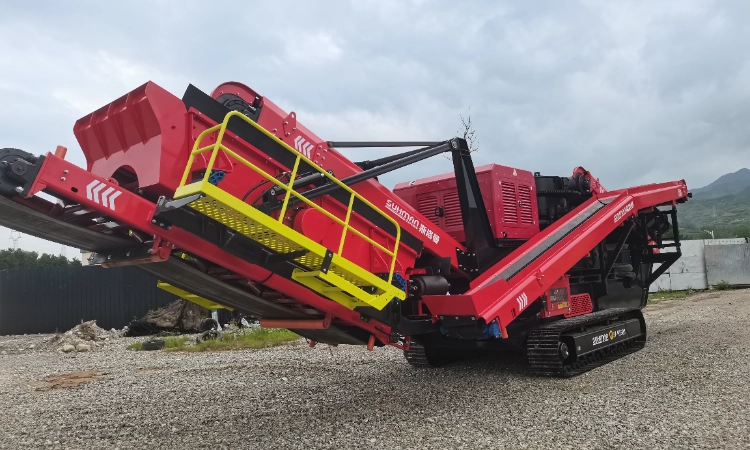Как выбрать между мобильной дробильной станцией и стационарной дробильной производственной линией?
Время выхода: 2025-05-03
Сравнение стационарных и мобильных дробильных установок: Преимущества, стоимость и критерии выбора
В горнодобывающей промышленности предпочтение отдается стационарным дробильным линиям, которые отличаются длительным сроком службы, отработанной технологией и стабильностью, что делает их преимущественным выбором для большинства горнодобывающих предприятий. Однако с развитием горного оборудования и технологических процессов значительную популярность приобрели экономически эффективные мобильные дробильные установки. В этой статье сравниваются преимущества, инвестиционные затраты и соображения выбора стационарных и мобильных дробильных линий на примере шахты, перерабатывающей 4000 тонн сырой руды в день и использующей двухстадийный процесс дробления с одним замкнутым контуром для уменьшения размера руды с максимального размера 600 мм до менее 30 мм.

1. Сравнение стационарных и мобильных дробильных станций
1.1 Стационарная дробильная станция
Стационарная дробильная станция предполагает установку дробильного оборудования в специально отведенном месте, где оно остается постоянно после монтажа.
Стационарные станции требуют значительных строительных работ, включая фундаменты под оборудование, частичное перекрытие, подпорные стены, бетонные бункеры, цеха на стальных каркасах и конвейерные коридоры, что ведет к значительным затратам на строительство.
Преимущества:
- Зрелый процесс: Обычная планировка с устоявшейся практикой строительства и эксплуатации.
- Крупногабаритное оборудование: Позволяет осуществлять централизованное дробление с помощью более крупных моделей оборудования.
Недостатки:
- Большая площадь: Требует значительного пространства, со строгими критериями выбора места.
- Высокие гражданские издержки: Крупномасштабное строительство с длительными сроками выполнения и множеством неконтролируемых факторов.
- Трудоемкие: Требуется 5 операторов в смену и 2 грузчика.
- Сложный процесс: Включает в себя длительные рабочие процессы, множество единиц оборудования и сложное управление.
- Высокие затраты на дробление: Требует транспортировки руды на короткие расстояния, что увеличивает эксплуатационные расходы.
- Инфраструктура многократного использования: Строительные работы устаревают после того, как шахта истощается.
1.2 Мобильная дробильная станция
Мобильные дробильные станции обеспечивают мобильность и гибкость, позволяя использовать их непосредственно на горных платформах. Для их установки не требуются цеха или строительные фундаменты, что делает их идеальным решением для шахт с проблемами землеотвода. После истощения шахты мобильные станции могут быть перемещены на другие участки, что повышает их экономическую ценность.
Преимущества:
- Предварительно собранное оборудование: Заводское изготовление, не требующее установки на месте; вводится в эксплуатацию при подключении питания.
- Маленький след: Может работать на существующих горнодобывающих платформах.
- Упорядоченный процесс: Экскаваторы подают взорванную руду прямо в бункер оборудования, а переработанная руда перевозится на склад грузовиками.
- Нет строительных работ: Устраняет необходимость в мастерских или фундаментах.
- Гибкие варианты питания: Поддерживает гибридные режимы работы на масле и электричестве, что позволяет работать в удаленных районах с самоходной или дистанционно управляемой мобильностью.
- Снижение инвестиций: Снижение первоначальных затрат по сравнению со стационарными станциями.
- Минимальный труд: Требуется всего 2 оператора в смену: 1 экскаватор для подачи и 1 погрузчик для перемещения материалов.
- Универсальное повторное использование: Может быть перемещена на другие площадки для дробления сырой руды, строительного щебня, отходов сноса или материалов для автомобильных и железных дорог.
- Снижение затрат на дробление: Устраняет необходимость в перевозках на короткие расстояния, снижая эксплуатационные расходы.
- Быстрое развертывание: Короткие производственные циклы и быстрая окупаемость инвестиций.
Недостатки:
- Более высокие затраты при больших объемах: Оборудование для высокопроизводительной обработки может быть дорогим.
- Несколько блоков для больших площадок: Для шахт с большим количеством точек отбора может потребоваться несколько мобильных станций.
2. Сравнение инвестиционных и эксплуатационных расходов
2.1 Инвестиционные затраты
- Стационарная дробильная станция: Общий объем инвестиций, включая оборудование, мастерские и строительные работы, составляет около 10 миллионов юаней.
- Мобильная дробильная станция: Полный комплект, включающий мобильную щековую дробилку, мобильную конусную дробилку и мобильную сортировочную машину, стоит около 5 миллионов юаней.
Сбережения: Мобильные дробильные станции позволяют сэкономить около 5 миллионов китайских юаней по сравнению со стационарными станциями.
2.2 Эксплуатационные расходы
- Потребляемая мощность:
И стационарные, и мобильные станции имеют установленную мощность 500 кВт, что приводит к одинаковым затратам на электроэнергию. - Труд:
- Стационарные станции требуют 5 операторов в смену.
- Мобильные станции требуют 2 операторов в смену, что снижает затраты на оплату труда.
- Износостойкие детали: Затраты на изнашивающиеся части оборудования сопоставимы для обеих систем.
- Тяжелое оборудование:
- Для стационарных станций требуется 2 погрузчика: один для подачи руды в бункер и один для загрузки дробленой руды.
- Мобильные станции требуют 1 экскаватор для подачи и 1 погрузчик для загрузки дробленой руды.
- Хотя мобильные станции используют дополнительный экскаватор, им требуется на один погрузчик меньше и на 3 оператора в смену меньше. В целом эксплуатационные расходы аналогичны.
3. Анализ и выбор конкретных примеров
Для рудника, ежедневно перерабатывающего 4 000 тонн сырой руды, инвестиционные и эксплуатационные затраты на стационарные и мобильные дробильные станции сопоставимы. Однако мобильные дробильные станции обладают значительными преимуществами:
- Мобильность: Может быть развернута непосредственно на платформах для добычи, обеспечивая гибкость и удобство.
- Нет строительных работ: Устраняет необходимость в дорогостоящих мастерских и фундаментах, идеально подходит для шахт с ограниченными земельными ресурсами.
- Возможность многократного использования: После истощения шахты могут быть перемещены на другие участки, что повышает экономическую жизнеспособность.
Критерии отбора:
Выбор между фиксированной или мобильной линией дробления требует всестороннего анализа множества факторов, включая:
- Условия на участке: Мобильные станции лучше подходят для объектов с ограниченным пространством или проблемами с приобретением земли.
- Продолжительность проекта: Стационарные станции могут быть предпочтительны для долгосрочных и масштабных операций, в то время как мобильные станции лучше всего подходят для краткосрочных проектов или проектов с несколькими объектами.
- Бюджетные ограничения: Мобильные станции обеспечивают более низкие первоначальные затраты и быстрое развертывание.
- Операционная гибкость: Мобильные станции обеспечивают большую адаптивность к динамичным условиям добычи.
В заключение следует отметить, что, хотя оба варианта имеют свои достоинства, мобильные дробильные станции зачастую более экономичны и практичны, особенно для шахт, требующих гибкости, быстрого развертывания и возможности многократного использования. Оптимальный выбор будет сделан на основе тщательной оценки потребностей и производственных целей конкретного объекта.Китай производитель дробилкиПрименение и преимущества мобильных дробилокПреимущества мобильной роторной дробилки гусеничного типа, произведенной в Китае




